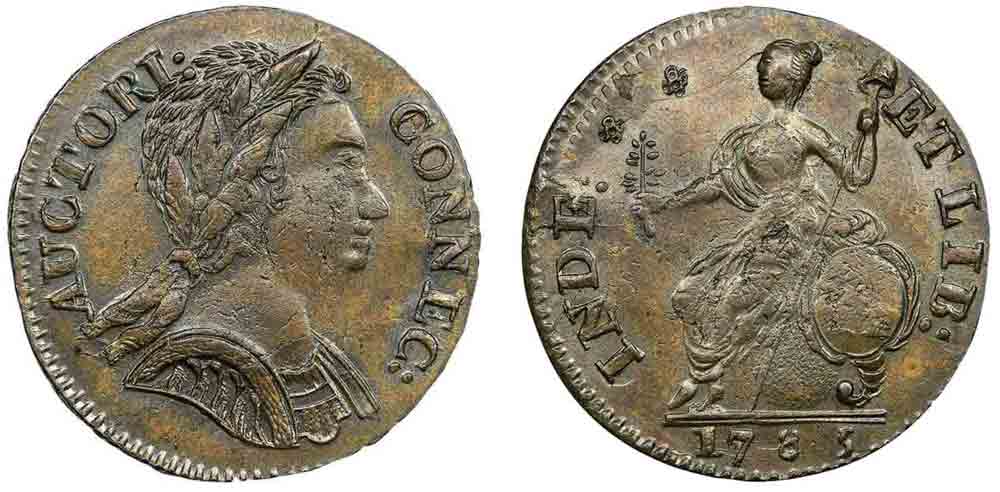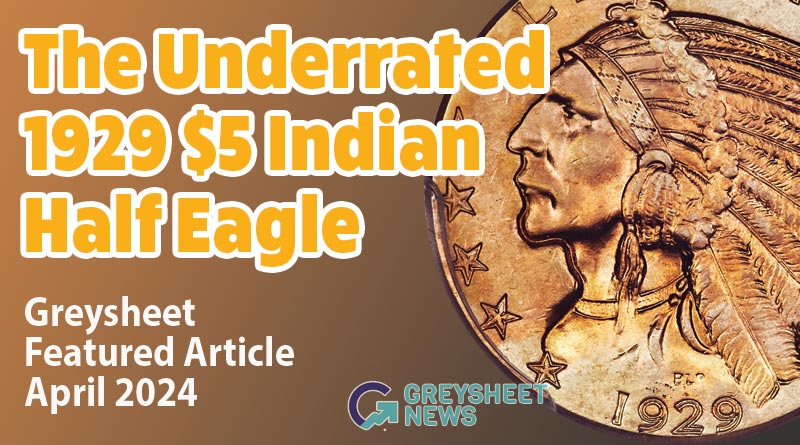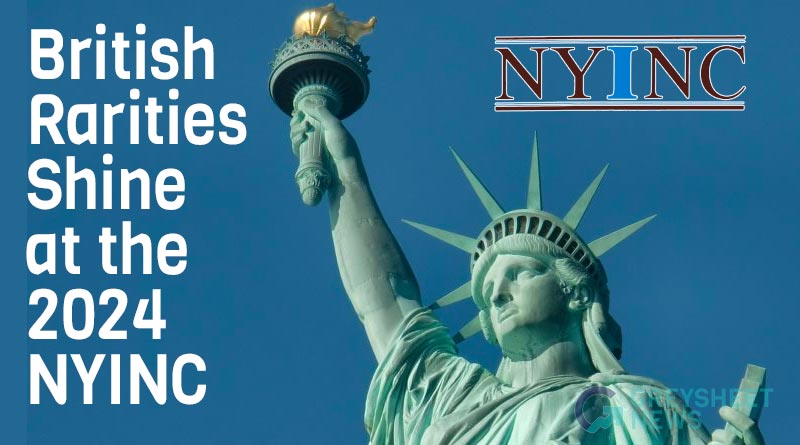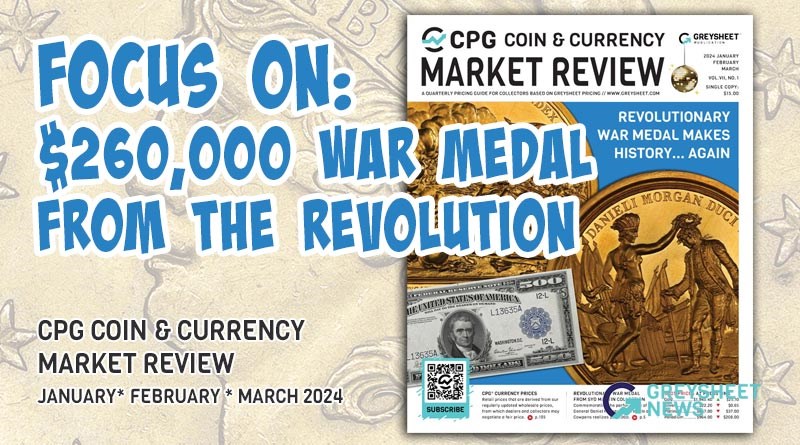CONNECTICUT COPPERS, PART 3: Easily Assembling A Set
In the third and final installment of the series, Greg Reynolds gives advice on how a collector can start a meaningful collection of these fascinating and historic collectibles.
Editor’s Note: Click here to see Part One of this series, which appeared in the November 2020 Monthly Greysheet; Click here for Part Two which appeared in the December 2020 Monthly Greysheet.
In part one, of this series the background and meaning of Connecticut Coppers were discussed. In part two, the contents of a general set were explained. Although there are more than three hundred varieties of Connecticut Coppers, it is explained in part two that an affordable set of just twelve coins is complete in a logical sense, by date and subtype. Here in part three, the focus is on the costs and availability of the coins themselves so that collectors may commence building their respective sets
A collector should begin by spending amounts that he or she regards as small. Collectors tend to learn about a series while they are collecting. It is a good idea to carefully inspect coins, read about coins and ask questions. Some collectors may wish to start with low grade or ungradable coins in ‘details’ holders while effectively maintaining the option of upgrading later. A set comprising of the representatives of the following twelve dates or date+subtype combinations is complete enough and may amount to an excellent collection of this fascinating series.
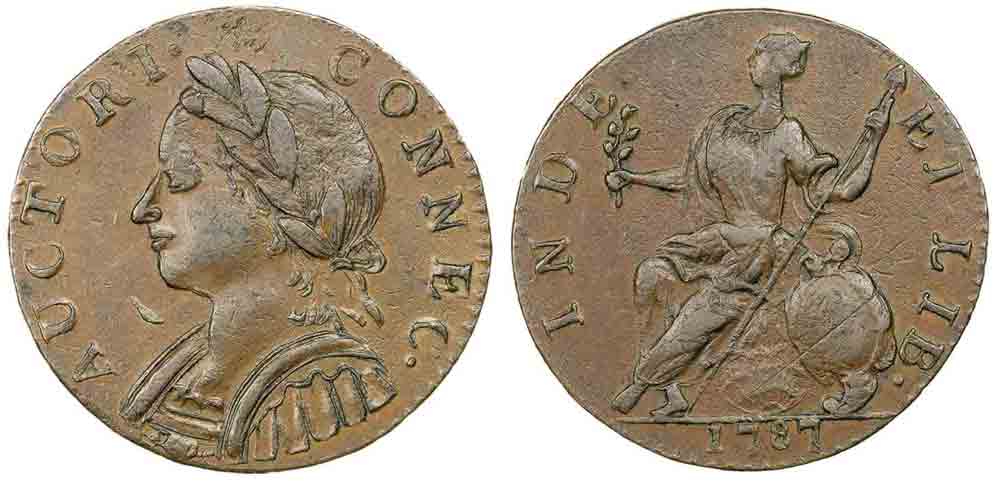
1785 BUST RIGHT
The obverse varieties really do not appear much different from each other, though one variety is often hyped. As an analogy, it is worth noting that the bust of Miss Liberty tends to noticeably vary in size and style on Capped Bust Lettered Edge half dollars dating from 1807 to 1836, which should be called Reich Capped Bust Bust halves. For coins struck before 1840, especially before 1828, slight differences in style and size of design elements are not unusual, and it is not necessary to seek representatives of all variations in order to complete a meaningful set of a series of coins.
Very Fine to Extremely Fine grade 1785 Bust Right Connecticut Coppers are relatively good values, if struck on decent planchets and are not extensively corroded. On March 18, 2020, Stack’s-Bowers auctioned a PCGS graded VF20 1785 for $264. On July 15, 2020, Heritage sold a PCGS graded VF25 coin for $492.
1785 BUST LEFT
These are rare.
In November 2019, Stack’s-Bowers sold six of them. A raw coin that was said to have “environmental damage” and graded Fine details realized $156. A raw coin that was graded VG10, presumably by the cataloguer, brought $360. A PCGS graded VF20 1785 Bust Left coin was auctioned for $720. I am deliberately honing in on sales of relatively less rare die pairings to illustrate the fact that a set by date may be assembled without spending a large amount of money.
1786 MAILED BUST RIGHT
I maintain that the so called “Small Head” and “Large Head” varieties are not substantially different.
On November 4, 2016, Stack’s-Bowers auctioned a PCGS graded VF30 1786 Mailed Bust Right coin for $998.75. On November 15, 2019, Stack’s-Bowers auctioned a PCGS graded VF35 1786 with a Round Head for $1,320.
In February 2020, Heritage auctioned a PCGS graded AU50 representative of a scarcer die pairing for $4,560. A collector should be able to find a pleasing, Mailed Bust Right 1786 for less than $1,250, maybe even for less than $600.
1786 MAILED BUST LEFT
On February 23, 2020, the firm called GreatCollections sold a Mailed Bust Left 1786 in a PCGS Genuine holder, which is said to have suffered environmental damage and to have the details of a VF grade coin. This coin sold for $58.50.
On April 8, 2020, Heritage sold a PCGS graded VF20 1786 Mailed Bust Left for $240. On March 18, 2020, Stack’s-Bowers auctioned a PCGS graded VF30 coin for $288 and a PCGS graded XF40 coin for $660.
1786 DRAPED BUST LEFT
These are extremely rare, though they can be found, and are priced reasonably, given their rarity. It is important to remember that there are a significant number of Connecticut and other State Coppers that are not currently in PCGS or NGC holders. Until the 2000s, a majority of collectors of colonials tended to prefer raw coins.
In June 2018, Heritage auctioned an NGC graded VF35 1786 Draped Bust Left Copper for $1,080. Higher grade coins cost much more, yet AG to VG grade coins tend to cost less than $550. On January 6, 2019, Heritage sold Draped Bust Left 1786 in an NGC holder with VF Details and a declaration that this coin has corrosion, for $126.
1787 MAILED BUST LEFT
These are not rare.
On December 9, 2018, Stack’s-Bowers sold an NGC graded G6 Bust Left 1787 for $115. On September 11, 2019, Heritage sold an NGC graded VG10 coin for $180. On February 16, 2020, the firm of David Lawrence sold a PCGS graded VF25 Mailed Bust Left 1787 for $325.

1787 MUTTONHEAD, MAILED BUST RIGHT
This has been termed “Muttonhead” since before 1875. It is generally believed that these were not minted in Connecticut and not at the Machin’s Mills facility near Newburgh, New York. During the 18th century, there were informal, underground mints in North America, which often made imitations and counterfeits. A particular clandestine mint in Massachusetts is often cited by historians and Muttonhead Connecticut Coppers could very well have been made there.
It is possible that Muttonhead Connecticut Coppers were partly satirical in nature. Did they poke fun at King George III and Britannia? It is also possible that the differences in design were effected for legal reasons, to later argue, if necessary, that these were legal imitations of Connecticut Coppers rather than counterfeits minted with criminal intent. There were instances of clandestine mints during the 1780s intentionally making very inexact imitations with the intention of evading laws against counterfeiting or preparing a defense in advance. Although the pertinent legal issues during the 1780s were extremely ambiguous, the Muttonhead pieces are now regarded as true coins.
In November 2016, Stack’s-Bowers auctioned a PCGS graded AG3 Muttonhead for $80. On November 15, 2019, Stack’s-Bowers auctioned a PCGS graded XF40 Muttonhead for $780.
1787 MAILED BUST RIGHT
Although the Muttonhead is clearly an additional date of the year 1787, the size of the head is not otherwise a primary factor. Either a Large Head or a Small Head is sufficient to represent a Mailed Bust Right 1787.
A Large Head 1787 Mailed Bust Right that has been PCGS or NGC graded in the range of VG10 to VF30 would be likely to sell for a price between $2,500 and $10,000, depending upon the die variety, surface quality and attractiveness of the individual coin.
As the Large Head 1787 Mailed Bust coins are very rare, it makes sense to acquire a Small Head 1787 for a general set. A theme here is to provide guidance for practically assembling a set of Connecticut Coppers.
In November 2018, Heritage sold a PCGS graded F12 Small Head 1787 for $264. On March 1, 2019, Stack’s-Bowers auctioned a PCGS graded VF30 Small Head 1787 for $504. A Small Head 1787 from the Robert Martin Collection was PCGS graded XF45 when it was auctioned by Stack’s-Bowers for $1,800 in November 2019 and PCGS graded AU50 when it was auctioned by Stack’s-Bowers for $2,040 in August 2020.
In one of the Heritage auctions of the Eric Newman Collection, there appeared one of two known 1787 Mailed Bust Right Connecticut Coppers with Britannia facing to the right on the reverse (Auction #1199, May 2014, lot 30080, p. 145). I carefully examined this piece in 2014. I theorize that it is not a coin. It could be a pattern, an experimental piece, a fantasy item, or a fake.
As a significant number of now surviving Connecticut Coppers were illicitly made at mints outside of Connecticut, and Coppers of the time period were often copied, there is a huge gray area in regard to legal imitations, contemporary counterfeits, and fakes.
The Newman Collection, 1787 Britannia facing right piece is the strangest Connecticut Copper that I recollect at the moment. That piece is heavily corroded, way off-color, and has weirdly smooth areas among misshapen areas, plus the physical characteristics of the planchet are atypical in a way that I cannot quite explain at the moment. The wavy nature of that piece and the conveniently missing detail on Britannia, the design element that makes that item distinctive, concern me. The odd twisting and sometimes overflowing rims raised red flags in my mind, too. In my opinion, a Britannia Facing Right Connecticut Copper is not needed for a complete set.
1787 DRAPED BUST
There are many die varieties of 1787 Draped Bust Left Connecticut Coppers, yet the differences among them are very minor. It is fair to classify of all of them as one date of one subtype.
On June 23, 2020, Stack’s-Bowers sold a PCGS graded F15 Draped Bust Left 1787 for $192 and a PCGS graded VF20 coin for $204. The coin that sold for $192 is of a rarer die pairing.
On August 30, 2020, GreatCollections sold a PCGS graded VF30 Draped Bust Left 1787 for $352.12. On August 7, Stack’s-Bowers auctioned two NGC graded AU58 Draped Bust Left 1787 Connecticut Coppers for $1,320 and $1,080, respectively. The coin that brought $1,320 is of a scarcer die pairing and the coin that brought $1,080 has some distracting mint-made flaws.
Even if two coins were struck from the same pair of dies and have received the same numerical grade from the same grading service, they may be significantly different in many ways. The health of the planchet (prepared blank), manners of storage, consequences circulation, later handling by collectors and other factors affect surface quality and eye appeal.
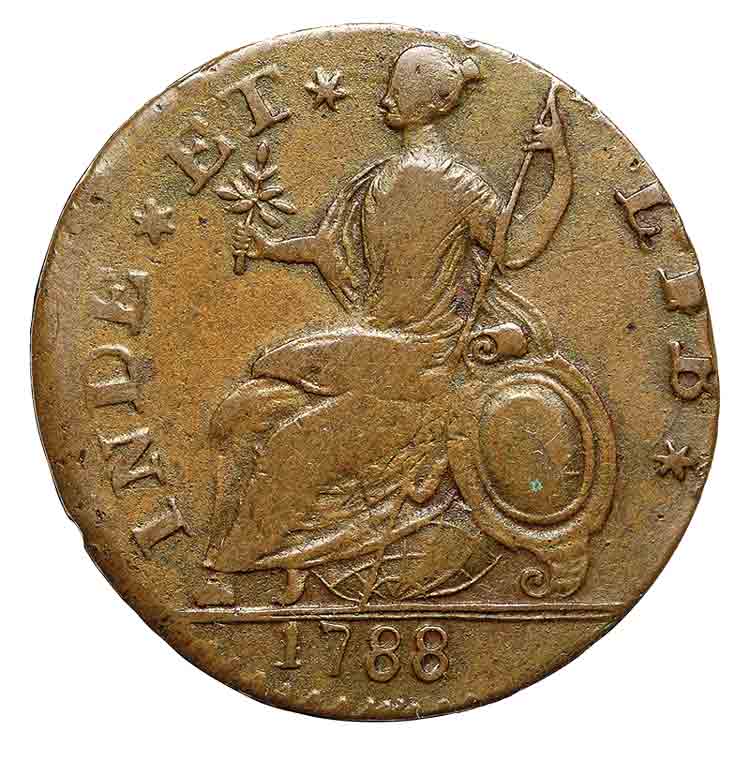
1788 MAILED BUST RIGHT
A G4 grade Mailed Bust Right 1788 would probably retail for around $50. On July 15, 2020, Heritage sold a PCGS graded VF20 Mailed Bust Right 1788 for $516. On June 18, 2020, Stack’s-Bowers sold an NGC graded AU58 coin for $1,920.
1788 MAILED BUST LEFT
These are not rare. In September 2019, Heritage sold an NGC graded VG10 Mailed Bust Left 1788 for $162. On March 11, 2020, Stack’s-Bowers sold a PCGS graded VF20 coin for $336. On November 15, 2019, Stack’s-Bowers auctioned a PCGS graded VF30 Mailed Bust Left 1788 Connecticut Copper for $432. On April 23, 2020, Heritage sold a PCGS graded AU55 coin for $3,120.
1788 DRAPED BUST LEFT
These are not difficult to find and acquire. Many, though, were manufactured in a primitive and careless manner, with numerous mint-caused defects. Many others corroded substantially over the years. Pleasant coins may bring noteworthy premiums.
On August 26, 2020, for just $35, Heritage sold one that was found by experts at NGC to be ungradable because of corrosion and to have the details of an AG grade coin. In September 2019, Heritage sold an NGC graded F12 Draped Bust Left 1788 for $168.
On November 15, 2019, Stack’s-Bowers auctioned a PCGS graded XF45+ Draped Bust Left 1788 from the Robert Martin Collection for $1,380. This same coin was earlier in the collection of Sylvester Crosby, who published a landmark book on Early American coins in 1875. For decades, this coin was in the Garrett Family Collection, one of the all-time greatest collections of American numismatic items.
Examples of auction results and other public sales are intended to provide an idea of current market values and the availability of Connecticut Coppers. The coins mentioned are representatives of dates and subtypes, not of especially rare die varieties. Moreover, specific coins are not being recommended here. Sale results are intended to provide general guidance and should not be interpreted narrowly.
Collectors should enjoy their pursuits while being careful. A coin that seems like a bargain may have problems that are not readily apparent. It is important to not take certified grades too seriously. The same grading service may assign different grades to the same coin at different times. It is also important to learn about conservation, cleaning and doctoring.
Collectors should not expect Connecticut Coppers to be flawless and pristine. Mint-caused imperfections and imperfections that came about due to normal wear or storage are parts of the personality of the respective coin. Connecticut Coppers are among the most wholesome of rare American coins, are available in most major coin auctions, and are often collected by buyers who are interested in their historical aspects.
Copyright ©2020 Greg Reynolds
Insightful10@gmail.com
Images courtesy of Heritage Auctions, HA.com

Download the Greysheet app for access to pricing, news, events and your subscriptions.
Subscribe Now.
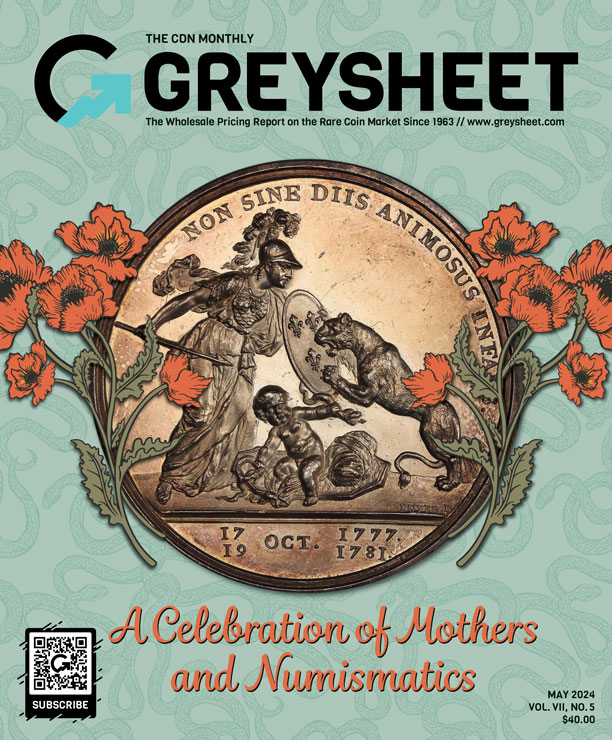
Subscribe to Monthly Greysheet for the industry's most respected pricing and to read more articles just like this.
Source: Greg Reynolds


